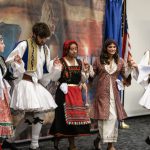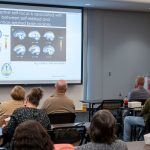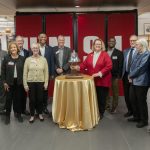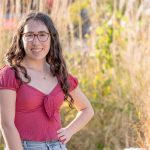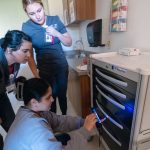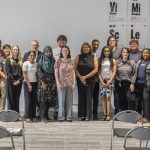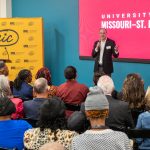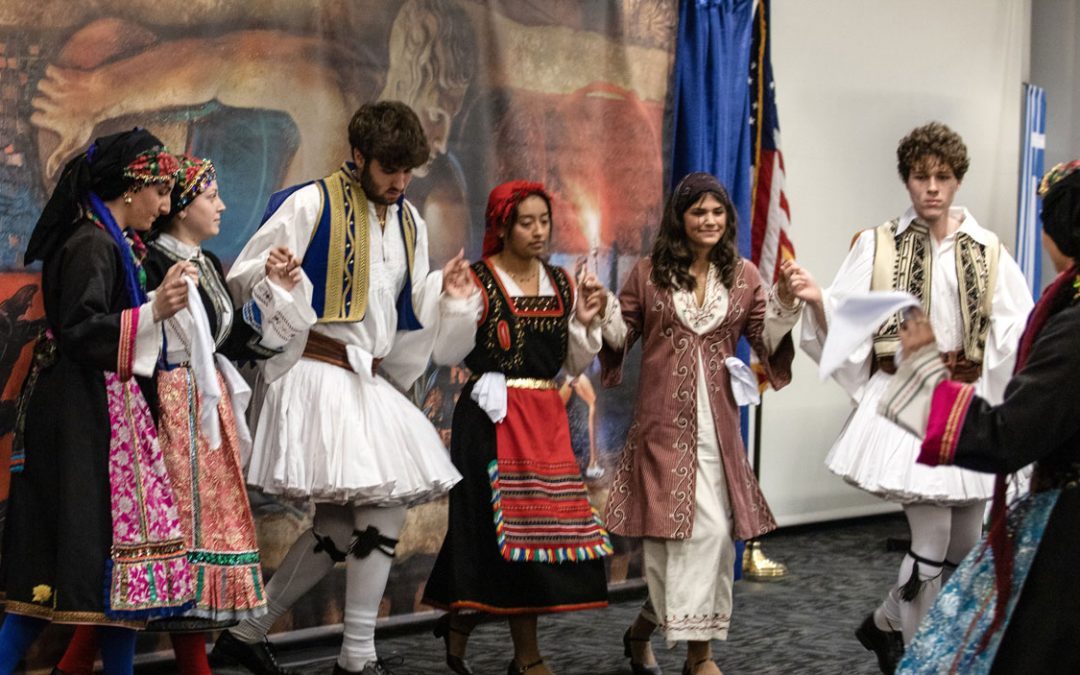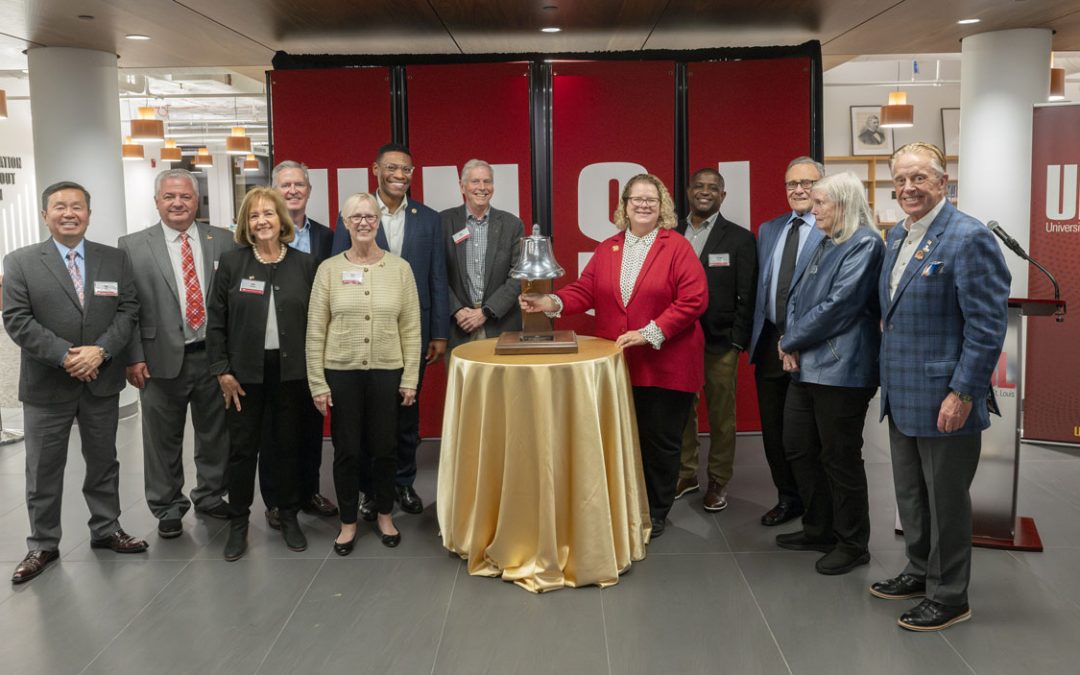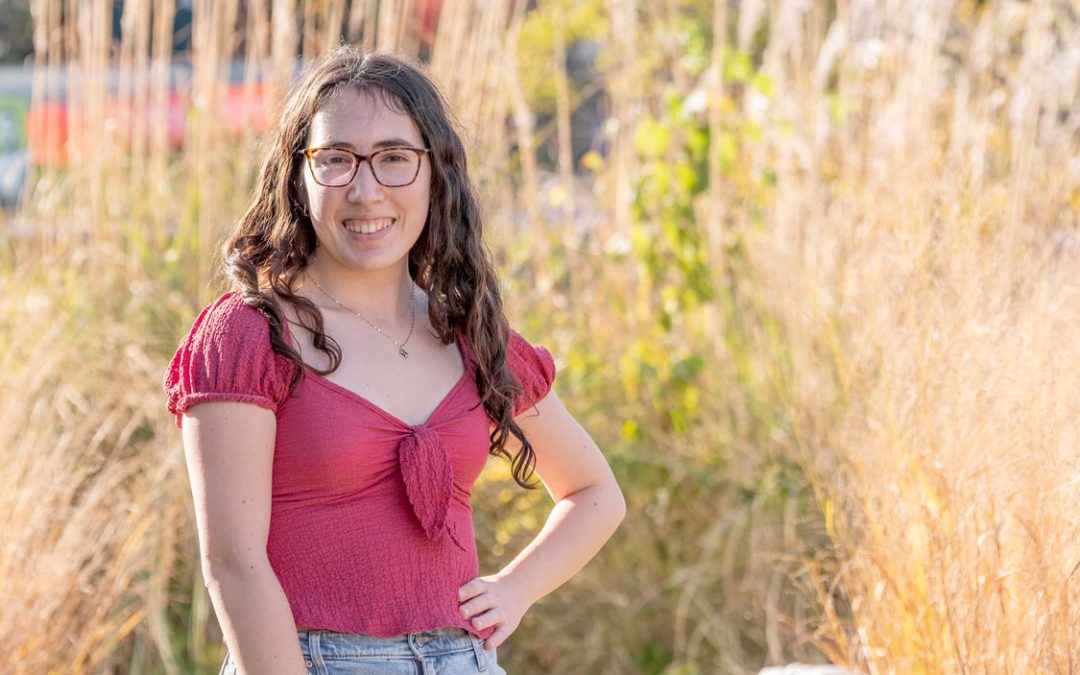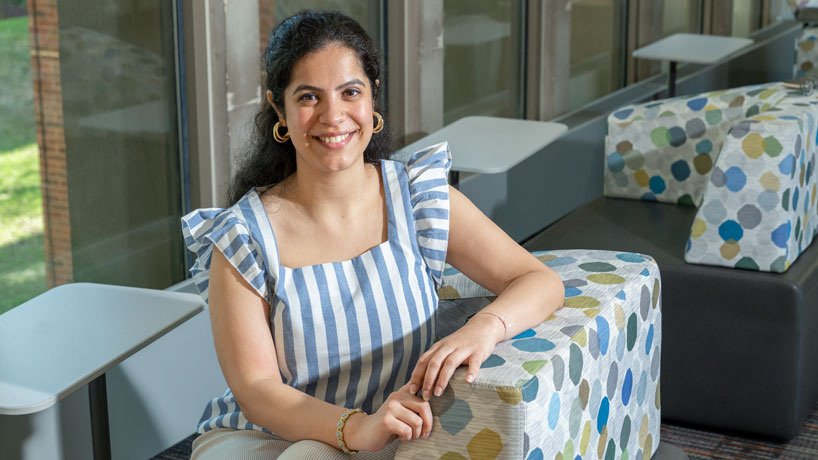
Palak Sondhi, a doctoral student in the Department of Chemistry and Biochemistry, was invited to participate in the Lindau Nobel Laureate Meetings in Lindau, Germany, this summer. (Photo by Derik Holtmann)
For more than 70 years, scientists from around the world have gathered at the Lindau Nobel Laureate Meetings in Lindau, Germany, each year to exchange ideas across different generations, scientific disciplines and cultures. In addition to around 30 to 40 Nobel Laureates, a select group of 635 undergraduates, PhD students and post-doc researchers under the age of 35 is invited to attend the once-in-a-lifetime event, representing the next generation of leading scientists.
This summer, Palak Sondhi – a doctoral student in the Department of Chemistry and Biochemistry at the University of Missouri–St. Louis – will be among that prestigious group of Young Scientists.
Sondhi, who will graduate in December, received a master’s degree in technology from the Indian Institute of Technology Roorkee in advanced methods of chemical analysis. During her master’s program, she received a DAAD (German Academic Exchange Service) fellowship, through which she spent eight months conducting research on nanoporous composites and their use in dye degradation in Germany. She started at UMSL in 2019 and has spent the past four years concentrating her research in the area of surface nanobioscience under the guidance of Keith Stine, chair of the Department of Chemistry and Biochemistry.
“Palak is a creative and enthusiastic student who pushes research in new directions and has a high level of curiosity about chemistry and science in general,” Stine said. “She is also a talented writer and skilled experimenter.”
During the Lindau Nobel Laureate Meetings, Sondhi will be able to further that passion for chemistry and the broader field of science. The week-long program begins on June 25, offering the group of Young Scientists the opportunity to listen to lectures, seminars and panel discussions from the Nobel Laureates and connect with them directly over dinners and lunches, evening walks, workout sessions and a cruise trip to a nearby island. Some of the Young Scientists will even be invited to present their own research during a series of next-generation talks.
“Meeting the Nobel Laureates and having one-on-one interactions with them is surely a tremendous honor,” Sondhi said. “Meeting one Nobel Laureate is possible in a meeting or conference, but what about 30 to 40 people? That is a major event. When you meet someone you admire in person, it’s like a dream come true. There are a few Noble Laureates whose work and journeys I truly like, so talking with them about my work means a lot and getting some inspiration or suggestions from them will be great.”
Sometime this month, Sondhi will find out if she’s been selected to present her abstract on the fabrication of hierarchical nanoporous gold and its application in the biological world.
“We primarily work with modifying the surface of nanoporous gold,” Sondhi explained. “One of the new materials that combines the benefits of nano, porous and metallic materials is NPG. In addition to the typical properties of nanoporous materials, NPG also possesses a variety of special qualities, including outstanding structural stability, adjustable pore size, high conductivity, remarkable biocompatibility and distinctive electrochemical catalytic activities. We use NPG to investigate the interactions of biologically relevant molecules.
“We are attempting to create nature-inspired hierarchically nanoporous materials. The structure is highly reminiscent of things like bones and bamboo shoots that we find in the natural world. So, we are developing sensitive electrode designs to research conditions like sepsis, COVID and osteoporosis. Fabricating and then altering the electrodes’ surfaces while researching the binding interactions is the main focus of my work.”
Regardless of whether or not she’s chosen to present her research, Sondhi knows that merely attending the prestigious conference will be a life-changing experience for her as a young researcher.
“The purpose of this gathering is to advance scientific inquiry and discuss how our policies may affect science,” Sondhi said. “I believe that as young researchers, we are always conducting research in the lab, but we never have a comprehensive understanding of how our research will affect society as a whole. Therefore, I believe that every young researcher who attends these meetings will gain an understanding of how other scientists will see their research, what extra we can do to better what we are doing, and how it will affect society more broadly.”
Sondhi is grateful for the help of Stine and Curators’ Professor Emeritus Alexei Demchenko, who wrote letters of recommendation for her during the application process and have supported her throughout her research journey. Although that application process was grueling, especially since Sondhi went through the more competitive open application route, she hopes other students across different disciplines such as chemistry, physics and economics will be encouraged to apply to participate in this prestigious experience.
“We need to spread the message as much as we can,” she said. “I’m excited for myself, but I really want to see others participate. That will make me even happier.”


